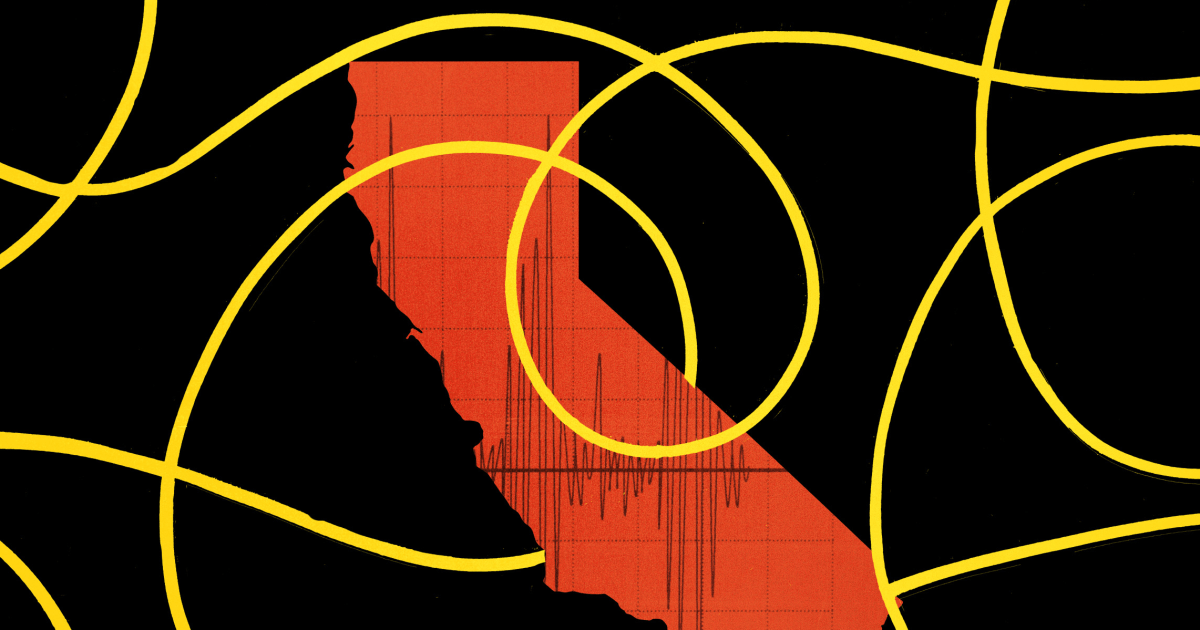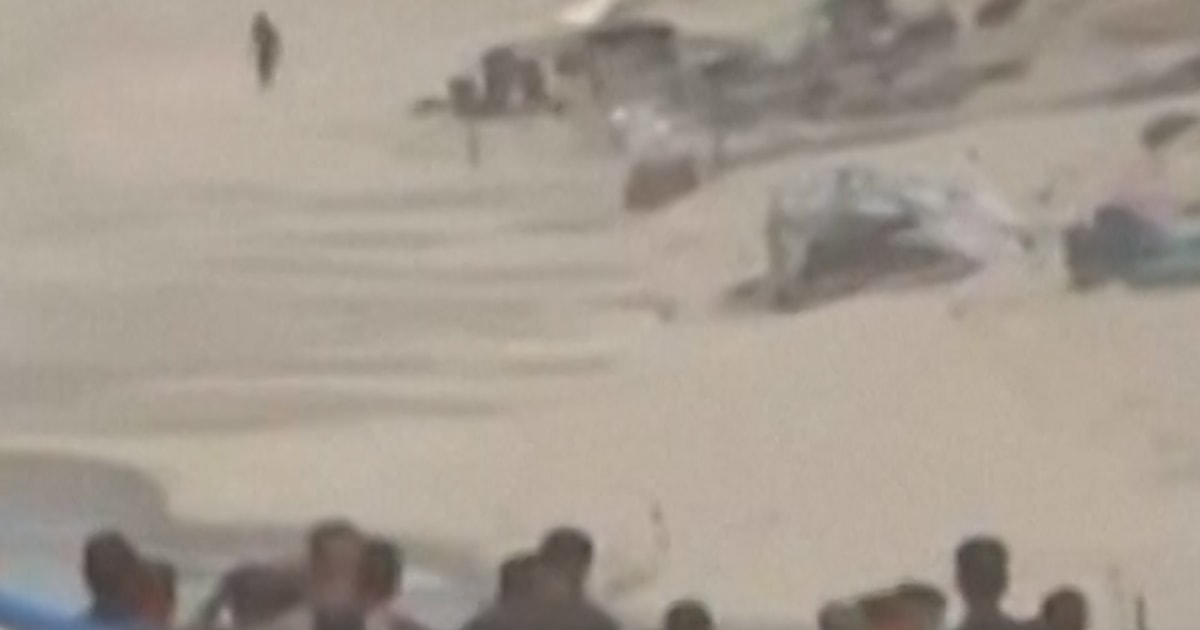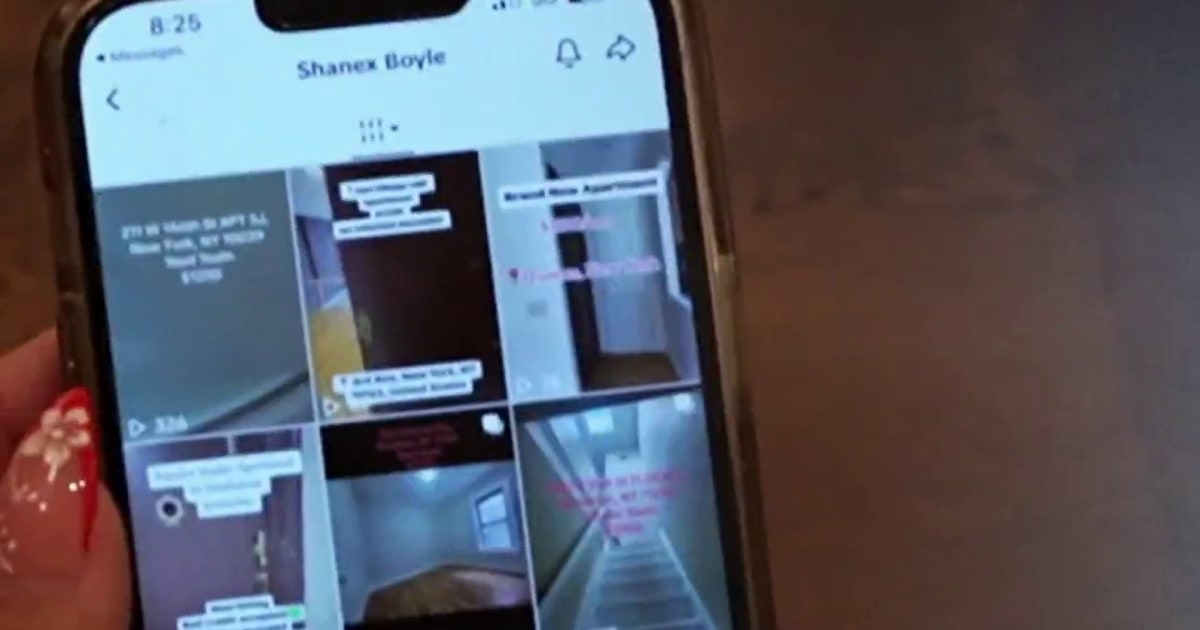Scientists were able to use the data from a fiber optic cable and a sensitive measuring device to “image” the Mendocino earthquake.
Source link
Sept. 25, 2025, 5:12 PM EDTBy Evan BushWhen the Mendocino earthquake ruptured off the California coast in 2024, it shook houses off their foundations, sent a 3-inch tsunami racing toward shore and touched off a fascinating science experiment — in the server room of a local police station, of all places. More than two years before the quake, scientists installed a device called a “distributed acoustic sensing interrogator” at the Arcata Police Station near the coast. The device fires a laser through the fiber optic cables that provide the station with internet service and senses how some of that laser light quivers or bends as it returns to its source.Now, in a study published Thursday in the journal Science, researchers announced that they were able to use the data from the fiber optic cable to “image” the Mendocino earthquake — determining the magnitude, location and length of the rupture.The study shows how scientists can essentially turn fiber optic cables into seismometers that return detailed data about earthquakes at the speed of light. Outside scientists said this fast-developing technology could drastically improve earthquake early-warning systems, giving people more time to seek safety, and could be key to predicting catastrophic earthquakes in the future, if that’s possible.“This is the first study that’s imaging an earthquake rupture process from an earthquake that’s this large,” said James Atterholt, a research geophysicist at the United States Geological Survey, and the first author of the new study. “This shows that there’s potential to improve earthquake early warning alerts with telecom fibers.”The study suggests that researchers could piggyback their equipment to already vast networks of telecommunications cables — which are used by Google, Amazon and AT&T, for example — to gather data where seismometers are sparse. Seafloor seismic monitoring is particularly expensive, and this could offer a more affordable option. Emily Brodsky, a professor of earth sciences at the University of California, Santa Cruz, who was not involved in the research, said “earthquake early warning could be dramatically improved tomorrow” if scientists are able to broker widespread access to existing telecommunication networks.“There’s not a technical hurdle there. That’s what the Atterholt study demonstrates,” Brodsky said in an interview. And in the more distant future, the use of this technology with fiber optic cables could help researchers determine whether some of the most catastrophic earthquakes could be predicted in advance. Scientists have noticed intriguing patterns on underwater subduction zones in recent years before some of the biggest earthquakes, like the 2014 magnitude-8.1 earthquake in Chile and the 2011 Tohoku earthquake and tsunami in Japan, which touched off the Fukushima nuclear disaster. Both of these massive earthquakes were preceded by what are called “slow-slip” events, which release their energy slowly over weeks or months, but don’t cause perceptible shaking to humans. Scientists aren’t sure what to make of the pattern because there are only a few examples of it, and earthquakes of magnitude-8.0 and above are rare and sparsely documented with in-depth monitoring. If scientists were able to monitor seismic activity on telecommunications networks, they’d have a better chance of documenting these events closely and determining whether there’s clear evidence of a pattern that could predict future catastrophe. “What we want to know is whether faults slip slowly before they slip quickly” and produce a big quake, Brodsky said. “We keep seeing these hints from far away. And what we really need is instruments up close and personal on the fault.” Brodsky said it’s not clear whether these large subduction zone earthquakes are predictable, but the subject is the source of lots of scientific debate, which this new fiber optic technology could help settle. Researchers have been pursuing seismic monitoring through fiber optic cables for about a decade. Brodsky said this research demonstrates that the federal government, the scientific community and telecommunications providers ought to negotiate over access. “There are legitimate concerns. They’re worried about anybody sticking an instrument on an extremely valuable asset for them. They’re worried about damage to the cables or someone listening,” Brodsky said of the telecommunications companies. “However it’s pretty clear it’s also in the public safety interest to have that data, so that is a problem that needs to be solved at the regulatory level.” Atterholt said the fiber optic sensing technology would not supplant traditional seismometers, but would supplement what data already exists and would be less expensive than installing seismometers on the seafloor. Using the cables for seismic monitoring typically does not affect their core purpose of data transmission. Jiaxuan Li, an assistant professor of geophysics and seismology at the University of Houston, who was not involved in this research, said there are still technical hurdles to overcome to use distributed acoustic sensing (DAS) technology offshore. Right now, the technology can be used for distances up to about 90 miles. Li said similar technology is being used in Iceland to record how magma is moving in volcanoes. “We used DAS to perform early warnings for volcanic eruptions,” Li said. “It is operational now. The Iceland Meteorological Office is using this technology to issue an early warning.” The technology also helped reveal that the Mendocino quake was a rare “supershear” earthquake, when the fault’s fracture is happening faster than its seismic waves are traveling. It’s akin to a “fighter jet exceeding the speed of sound” and producing a sonic boom, Atterholt said. The new research unexpectedly revealed the pattern in Mendocino and could offer new clues to this phenomenon. “We haven’t really nailed down why some earthquakes go supershear and why some don’t,” Atterholt said. “It can alter how hazardous the earthquake is, though we don’t fully understand that relationship either.” Evan BushEvan Bush is a science reporter for NBC News.




